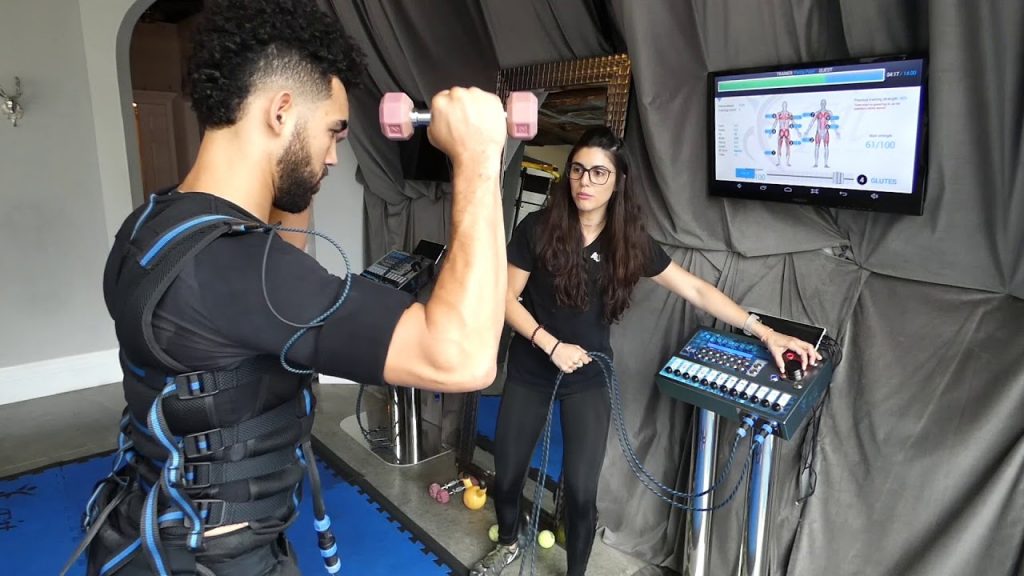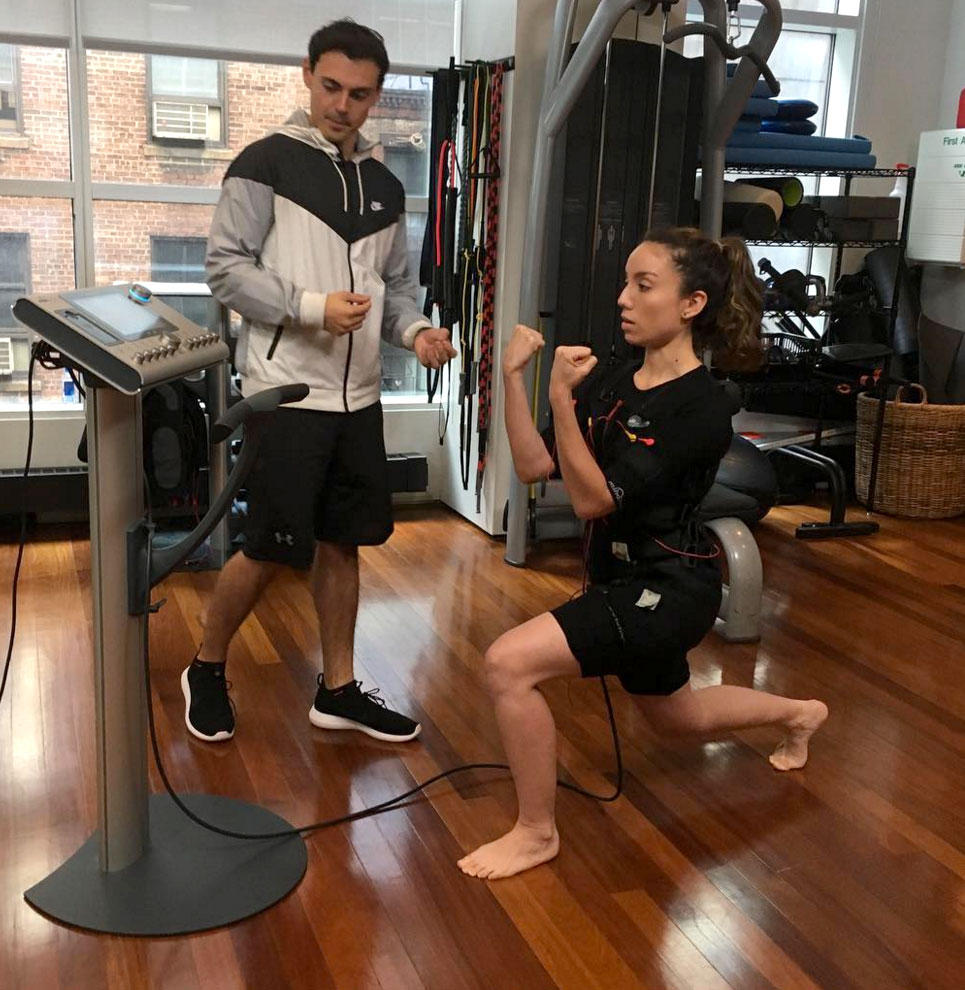What is EMS?
Imagine if you could reap the benefits of strength training—build muscles and burn more fat and calories—without dedicating hours at the gym. Instead, all it would take is a few quick 15-minute sessions hooked up to some wires and, voila, serious results. A pipe dream? Apparently not—at least according to the pros at 20 Pulses, a new gym incorporating electrical muscle stimulation (EMS) into workouts.
With little (although growing) research, the jury is still out on whether these EMS routines are truly worth all the buzz. Read on to get a full overview on electrical muscle stimulation.

What is Electrical Muscle Stimulation, exactly?
If you’ve ever gone to physical therapy, you may have experienced EMS or “e-stim,” to help loosen your tight muscles so they can recover. When used therapeutically, these devices are designed to stimulate nerves that make muscles contract, ultimately relaxing and loosening any tight spots. (BTW, did you know that physical therapy can also boost your fertility and help with getting pregnant?!)
There are actually plenty of these pain-alleviating devices available over the counter and online (also called TENS – transcutaneous electrical nerve stimulation-units), which will run you around $200. But, again, they’re designed to work on a specific area, not your entire body and are typically used under professional supervision. Although these devices are generally safe and easy to use, it is not recommended to use them during a workout.
Okay, so how does this differ from EMS workouts?
Instead of focusing on a specific body part as you’d do in physical therapy, during EMS workouts, electrical stimulation is typically delivered to larger areas of the body via a suit, vest, and/or shorts. As you exercise (which is already engaging your muscles), the electrical impulses force your muscles to contract, which may result in more muscle recruitment. Most EMS workouts are pretty short, only lasting between 15 and 20 minutes, and range from cardio and strength training to fat burning and massage.
For example, after you slip on your stim ensemble, a trainer will lead you through a series of low-impact exercises such as planks, lunges, and squats. (But, first, you’re going to want to make sure you know proper squat form.) Sure it might sound simple enough, but it’s no walk in the park. Because the pulse actually acts as resistance, the movements feel much harder and leaving you fatigued way faster. Just like with other training, you might be sore. Overall, how sore you are after any EMS training depends on multiple factors, such as the intensity of the work, the weight used, the amount of time, how much eccentric load was done, and if any of the movements were done in new ranges.

So, does EMS training work?
When exercising normally, neurotransmitters in the brain tell your muscles (and the fibers within them) to activate and engage in order to perform each movement. Over time, as a result of things such as injury, over-training, and poor recovery, muscular imbalances can occur and limit your muscle fibers’ activation during moves when they should normally be recruited.
However, when EMS is added to the equation, it allows you to call upon more muscle fibers (including those that have remained dormant). As long as you don’t go overboard, this increase in muscle engagement could result in strength gains. If you use e-stim in tandem with movement and weight, your muscles should get stronger than if you did the moves alone, according to some research. In a 2016 study, people who did a six-week squat program with EMS had greater strength improvements compared to those who did not use EMS.
Bottom line: EMS workouts have proven to be effective, but you need to do it under expert supervision to avoid injury and other health complications. Have you tried it out for yourself? Share your experiences in the comments below!



